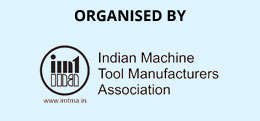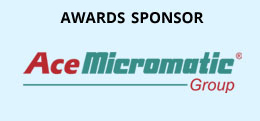International Forming Seminar Wrap-up
We have now come to the conclusion of this seminar. Before we close we thought we would briefly wrap up the proceedings for the benefit of those of you who were unable to attend all the sessions
We started the day with enlightening key note session by Fraunhofer IWU Chemnitz, Germany on Vehicle Light-weighting employing Hollow Shaft Strategy, Hot Forming & Magnesium Forming and update on Fusion of various technologies.
Under the stream Design & Software the first session by Godrej and Boyace illustrated the new methodology of predicting and applying Spring-Back compensation for an HSS Component with associated benefits. The next presentation was from Fraunhofer IWU Chemitz, Germany on Alternative Heating Strategy and Process Chain for Hot Forming. It covered selective Heating and Cooling for localized tailoring of properties, it also threw up High Speed Impact Cutting post Hot Forming as an alternative to Laser Cutting for saving on energy cost.
Third presentation by Data M Sheet Metal Solutions, Germany discussed in depth the Simulation for Roll Forming influencing the Design of New Roll Forming Lines for 3D Forming typically for Long Member of Trucks.
The presentation by Fibro GmbH Germany spoke about use of Controllable Gas Springs with Wireless remote monitoring of pressure, it also showcased Hydro-cams for compact multifunctional Die Design. These concepts are poised to transform the Sheet Metal Forming Tools in near future.
Hatebur Switzerland presented interesting possibilities of Light-weighting of forgings like fasteners with use of Higher strength material, with optimized shapes and lower temperature forming for saving on energy cost.
Finally, the presentation from Simufact Germany scaled the depth of Simulation for Forging and Sheet Forming by use of advanced techniques covering the finer aspects.
The second stream on Equipment and Tools began with proxy presentation from Hexagon Metrology Intelligence Singapore about automation of in-line inspection of BIW line using combination of Robotized Scanning along with Gap and Flushness Gauging.
The presentation by DVB Design & Engineering India highlighted the benefits of using Progressive Dies even for medium and large components while clearing myths and detailing some special features of Progressive Dies and compatible presses.
Dreher Automation GmbH Germany presented some case studies where by retrofitting automation products on Transfer Presses and Blanking Lines a lot could be achieved in terms of increase in productivity and cost effectiveness.
Bharat Forge India presented their technology prowess in Analysis and Simulation of deflection and deformation in Hot Forging Dies using Finite Elements.
Electro-pneumatics & Hydraulics India presented the prospects of deploying Servo-electric technology in presses and metal forming industry for improving controllability and energy efficiency.
Last presentation from Rockwell Automation took us through the evolution of Safety Standards and how they have shifted stress on communication and control rather than stopping and how these are affecting presses, automation and subsystems.
In the stream Processes Electro-pneumatics & Hydraulics India presented how Tube Bending has become a field with diverse challenges and driven by stringent demands of economy and efficiency the machines and tools employed in this process have implemented many innovations.
This was followed by a presentation by Yamazaki Mazak Japan , the first part stressed on importance of controlled environment for manufacture of precision machines and the second part covered holistic automation with Laser Cutting Machine.
IIT Bombay presented a way of dealing with environmental issue of waste management. It was illustrated that Powder Metallurgy could be used to transform Grinding Sludge and Scales into useful recycled product thereby literally transforming waste to value.
Fagor Spain presented the equipment line up for Hot Forming and how the preference is shifting from Hydraulic to Servo-mechanical presses. Further they presented test reports with Hot forming, which lead to conclusion that Servo-mechanical presses are unfit for the process unless some special features are incorporated in their design.
Prof Karunakaran of IIT, Bombay explained the related terminology, latest trends, immense interesting possibilities and certain limitations associated with 3D Printing.
This stream was wrapped up by BalTec Switzerland covering the niche area of Riveting, highlighting the differences in riveting by forming, orbital riveting vs radial riveting. They gave an insight in available equipment and applications.
With this we declare the seminar closed. Hope to see you in next ISFT in 2018



